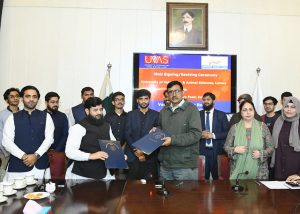
In light of the growing rate of population and severe climatic changes, access to water poses as a dividing line between poverty and prosperity for millions of people belonging to the rural sector of Pakistan. Due to these factors, serious water shortages and food deficits could take place by the year 2025, if immediate attention is not given to increase water storage and implement strategies to create zero wastage of water. Water scarcity has threatened the sustainability of irrigated agriculture in Pakistan, which produces more than 90 percent of grain production.
Livestock production also plays an important role in the rural economy by generating family incomes among the landless laborers and farmers. Currently, 35 million of the rural population is engaged in raising livestock having buffaloes, sheep and goats. Livestock sector contributes about 55 per cent to the agriculture sector and about 12 per cent to the GDP of Pakistan. Total livestock population is estimated at 55 million heads, out of which 23 million or nearly 42 percent are found in Baluchistan. Pakistan is considered as the 4th largest milk producing country in the world and a major exporter of meat to the neighboring countries. By developing a growth process powered by small farmers, Pakistan can attain an even more sustained economic growth, reducing poverty.
Agriculture is the single largest sector of Pakistan’s economy, which accounts for a quarter of GDP. It employs 44 per cent of the labor force and supports about 75 per cent of the population, accounting for more than 60 per cent of foreign exchange earnings. Textiles and food industries, both are largely dependent on agriculture.
The available fresh water for livestock production is influenced by several factors such as the type and physiological status of the animal, physical activity, type and amount of feed, temperature of the ambient environment.
The animals with better water conditions produce twice the amount of milk and butterfat as compared to the ones who have restricted water supply. For livestock production, the highest amount of water is utilized towards the production of the animal feed, varying from species to species.
However, large amount of water is lost to the environment by evaporation, respiration, urination, and defecation. The pivotal vital functions suffer in case of water discrepancy, which results in the compromised production of milk, meat, and eggs. The environmental temperature also influences the animal’s water intake.
Pakistan is considered as one of the most water-stressed countries in the world. Rainfall is meager and ranges from 500 mm in parts of Punjab to about 100 mm per annum in the Western parts of the country, lacking in provision of a reliable basis for rain-fed farming. The future food security and economic development of Pakistan depends on the proper management of its agricultural water. Despite squeezing water supplies, low efficiency of agricultural water use is a major problem in Pakistan.
In Pakistan, the frontline challenge is to tap available funding to take necessary technical measures for preserving existing water resources and developing new water supplies. It is necessary to mention that freshwater resources depend largely upon the rainfall therefore even small climate variations can make a huge impact on the available water resources of Pakistan. Policy makers should introduce initiatives, to cope with the projected climate changes and their impact on agricultural economy and environment, by building storage dams and easy access to irrigation water. This would require improved on-farm water management strategies, development of water-tolerant crops and value addition in crops and livestock sector.
In rain-fed areas, many farmers have invested in rainwater harvesting structures for supplemental irrigation and for recharging aquifers. These structures have been built by local groups and communities. For marginal areas, development of integrated crop-livestock technological packages to diversify incomes of farmers should be emphasized. Salt-tolerant forage plants are efficient in producing biomass of high nutrient value.
Above all, Pakistan needs to invest in institutions to enable them to undertake systematic sets of legislation and organizational changes to solve the management issues as well as delivering benefits to the people because without these strings chances of success will be very limited.
—Department of Anatomy, University of Agriculture Faisalabad







